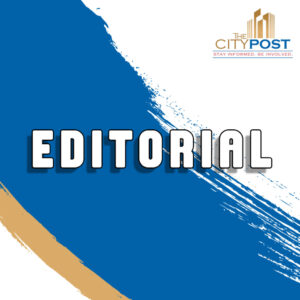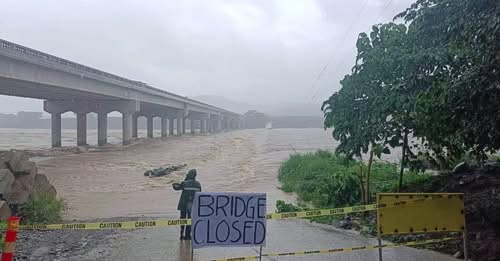It just means “after us, the deluge,” with “us” referring to the 23 reclamation projects that have created a concrete jungle in the Manila Bay, robbed city residents of their renowned sunset but spurred a dog-eat-dog contest that pits plutocrats against plutocrats in securing deals with the government to build “modern green and blue cities” in a bay that is slowly being choked to death.
The Kalikasan People’s Network for the Environment (Kalikasan-PNE) correctly pointed out that these 23 reclamation projects actually represent two-way environmental ruin. They collect silt, gravel, soil and other materials from Cebu, Zambales and other provinces, thus denying local government units (LGUs) same materials that they need for their infrastructure programs, and then dump them into Manila Bay, where they kill the marine environment, soil the waters, making them turbid and hostile to fish in the process. The unhealthy lahar used in the reclamation is “cancer” to cement, according to US-based scholar Dr. Kelvin Rodolfo.
“The intense flooding we are now experiencing in Metro Manila, Rizal, Bulacan, Cavite and Bataan is a direct result of the massive plunder of our watersheds and reclamation in Manila Bay,” explained Jonila Castro, Kalikasan-PNE advocacy officer and AKAP KA Manila Bay spokesperson, as Typhoon Carina battered Luzon, flooding many provinces and killing at least 13 people. Leaders never learn. After the disastrous Ondoy, when logs slammed Marikina from illegal logging camps upstream and hundreds of people perished, they still did not stop logging in the Sierra Madre and in Eastern Rizal.
No one pays heed to the calamitous impact of deforestation as 19 mining projects covering a total of 3,622 hectares continue to operate in the mountains of Rizal inside, or contiguous to, the Upper Marikina River Watershed (UMRW.) Worse, a former top banana at the Department of Environment and Natural Resources (DENR) owns quarries in Rizal. Moreover, Rizal also hosts two hydropower projects – the Kaliwa-Kanan Dam and the Wawa Dams – the construction and expansion of which affect UMRW and the riverine environment. Uncontrolled cutting of trees in the areas covered by the dam will worsen flooding downstream, particularly in Marikina and neighboring cities and towns.
Deaf to the importunings of environmental advocates, the unlamented ex-president Rodrigo Duterte approved the 2,500-hectate San Miguel Corp. (SMC) Aerocity Project that sits on poldered land and kept from sinking by mangroves and other natural defenses. SMC head honcho Ramon S. Ang, who is a licensed pilot, has already won tax perks for his airport and export processing hub in Taliptip, Bulakan, Bulacan at a time when Clark Airport has few arrivals and serves a puny number of routes. By not stopping all 23 reclamation projects, Marcos Jr. will allow the destruction of 47,000 hectares of seascapes and landscapes and obliterate natural barriers against storm surges, floods and coastal erosion.
AGHAM, which is comprised of scientists, said massive quarrying operations in Montalban has had negative impact on the UMRW and the poor people relocated in flood-prone areas and who suffered the most when Typhoon Ulysses flooded those areas, destroyed homes and killed residents in 2020. This typhoon broke the record of Ondoy on the volume of water disgorged through the UMRW and the many creeks and streams that crisscross what should have been a protected area. “From Presidents Duterte to Marcos Jr., lie upon lie has been rained upon us on the so-called benefits of mining, mega-dams, and reclamation. And now, only two days after President Marcos Jr.’s SONA, where he touted himself as a climate champion, his empty promises are literally drowning Metro Manila and nearby provinces,” said Castro.
She noted that in 2014, Rodolfo warned that more reclamation projects would cause massive flooding due to rising sea levels and subsidence. Data from Project NOAH have proven that coastal areas around Manila Bay are susceptible to flooding, with many areas in Manila actually 1.6 meters below sea level. Consider as well that southern Metro Manila was formed only about one million years ago and Laguna de Bay was locked in. Two presidents have already made full use of their powers to stop the reclamation projects only to let them resume later after public uproar over the deleterious impact of these projects on the Manila Bay ecosystem had died down. Project proponents claimed that the bay is practically bereft of fish, even as 60 years ago, the waters harbored anchovies, “balay,” mackerel, sardines and were a major source of livelihood for thousands of fishermen in Cavite, Bulacan, Bataan, Pampanga, Navotas and Malabon. Those were the days when salt was gold in Las Pinas until the subdivisions ripped salt beds away from the sea.
Yet, plankton still abounds in the bay to nourish the pelagic marine fish species, and drift to the extant oyster and mussel farms to feed the sessile bivalves. Viewed from the air, reclamation projects run smack against traditional waterways that, for millennia, had drained their waters into the bay. In doing so, these 23 projects are guilty as hell in guaranteeing that Metro Manila will be a lake, as what Typhoon Carina just did, flooding Quezon City, Makati, Marikina, Pasig, Taguig, Cainta, Antipolo, Pasay, San Mateo, Montalban, San Juan, Manila and others. After the reclamation projects came the deluge, the deluge that was Ondoy before reappeared as a monstrous nightmare to millions of residents in Metro Manila. It rained cats and dogs on July 24, just two days after President Ferdinand Marcos Jr. delivered his third State of the Nation Address (SONA). The heavens cried just as Vice President Sara Zimmerman Duterte Carpio and family purportedly flew to Germany and escaped nature’s wrath.




